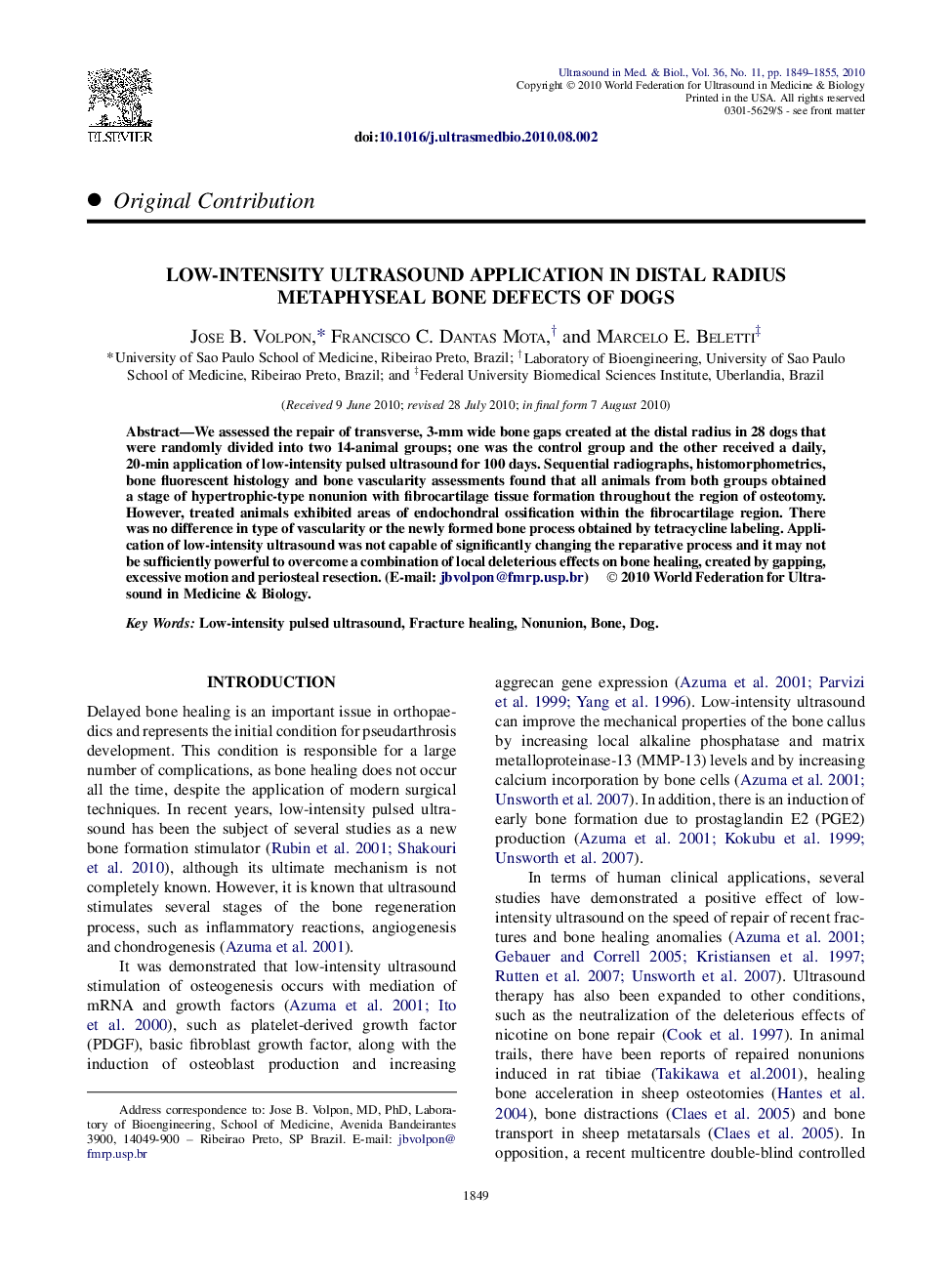| Article ID | Journal | Published Year | Pages | File Type |
|---|---|---|---|---|
| 1761847 | Ultrasound in Medicine & Biology | 2010 | 7 Pages |
Abstract
We assessed the repair of transverse, 3-mm wide bone gaps created at the distal radius in 28 dogs that were randomly divided into two 14-animal groups; one was the control group and the other received a daily, 20-min application of low-intensity pulsed ultrasound for 100 days. Sequential radiographs, histomorphometrics, bone fluorescent histology and bone vascularity assessments found that all animals from both groups obtained a stage of hypertrophic-type nonunion with fibrocartilage tissue formation throughout the region of osteotomy. However, treated animals exhibited areas of endochondral ossification within the fibrocartilage region. There was no difference in type of vascularity or the newly formed bone process obtained by tetracycline labeling. Application of low-intensity ultrasound was not capable of significantly changing the reparative process and it may not be sufficiently powerful to overcome a combination of local deleterious effects on bone healing, created by gapping, excessive motion and periosteal resection. (E-mail: jbvolpon@fmrp.usp.br)
Related Topics
Physical Sciences and Engineering
Physics and Astronomy
Acoustics and Ultrasonics
Authors
Jose B. Volpon, Francisco C. Dantas Mota, Marcelo E. Beletti,
